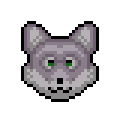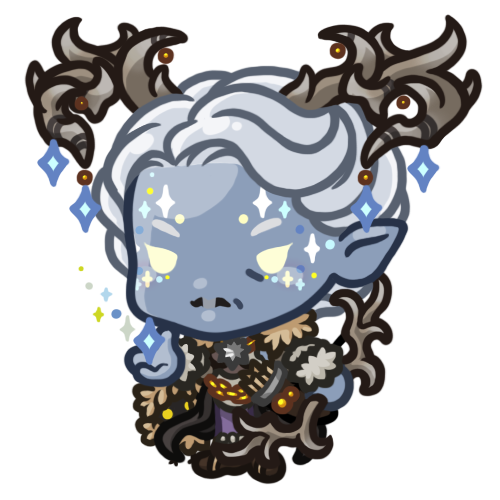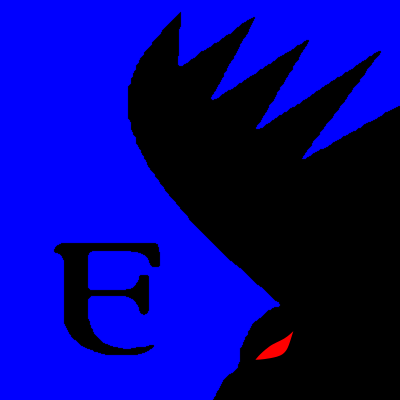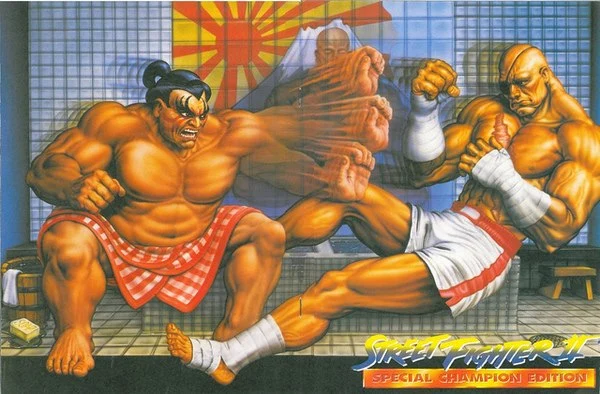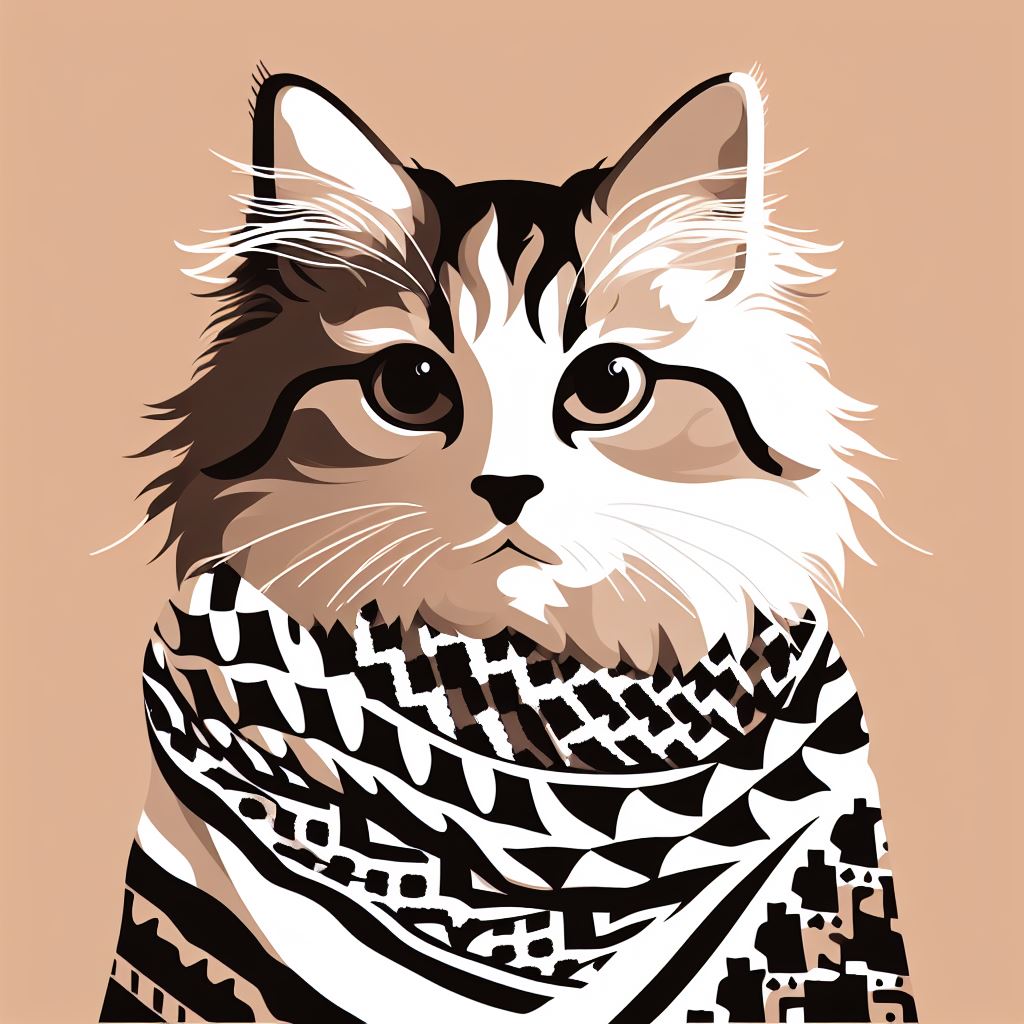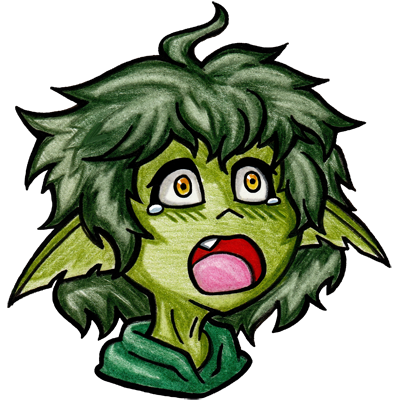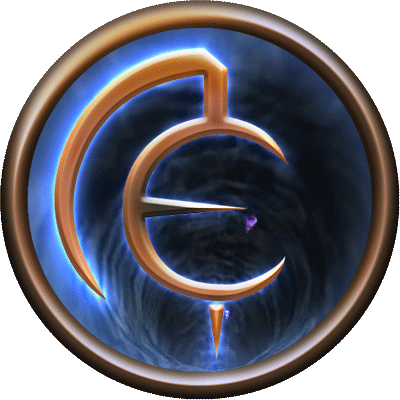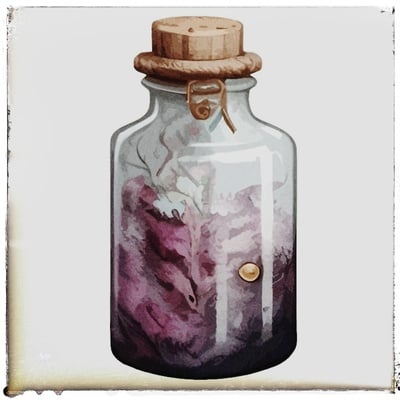Don’t humans have the ability to fuck everything? It’s why half elves and half orcs exist, but no non-human hybrids.
Ah, good old Book of Erotic Fantasy. It’s so gloriously stupid that everyone should own a copy. That table is by far not the silliest part of the book.
It’s only bested by the official sex rulebook for The Dark Eye, which is an April Fools joke that spiraled out of control and has actual rules for intercourse – deliberately bureaucratic and unsexy ones included purely as a “you asked for it” joke at the reader’s expense.
Honestly, Elder Scrolls has it right: the offspring of two different races will always be the race of the mother, but with some traits of the father.
None of that funny crossbreeding stuff, just keep it simple.
So basically your mitochondria decides your species?
Personally I like keeping it a little more complicated. It’s the same race as the mother, unless the mother is a ditto, in which case it’s the same race as the father.
At first I read this as “these species can fuck each other”. Then I realized that this is only concerning conception, all these species could fuck each other as they please.
Y or M means you can fuck that species. N means you can fuck that species without protection.
No way would I fuck a bugbear without some sort of protection…
I see that nymphs bang everything, makes sense. Sprites are only slowing down (with M for Maybe) at very large sized humanoids like Giants and Ogres, that’s pretty hardcore/disturbing.
If it applies to DnD’s cosmology, than it has to mean with viable offspring, because half-dwarves canonically exist in the Darksun setting and they’re called Muls.
Half dwarves exist in the default rules, they’re just indistinguishable from dwarves. Supposedly they’re actually pretty common.
There’s a small text at the bottom explaining the chart.
Then the chart is just wrong (I know which book it’s in and it is intended to apply to DnD).
Go on…
Dragons and Nymphs
don’tfuck around. Got it.And fiends of course
How do you fuck a dragon?
With a car
I’m so glad this meme transcends platforms
It’s not like we could leave reddit while leaving all the worst memes behind
Have you watched Shrek?
Cum all over its trea$ur
Adult dragons can shapeshift, so the same way you’d fuck anyone else.
dryads reject lizardfolk and only lizardfolk
By this I’m assuming lizard-folk lay eggs.
It never occurred me until now that half dwarves are not a thing
Muls from the Dark Sun setting are half dwarves. They’re sterile so I guess maybe they don’t count?
I was gonna say something about ligers and tigons, but then I did some research (looked it up on Wikipedia) and I learned some stuff. It has no relevance to my life, but it did clear up my misconception that hybrids are always sterile! So, in addition to making $125 donating plasma, making a new friend at the bus stop, and almost immediately getting drunk, I learned that some hybrids can be viable!
Be sure to continue your research with an image search, because they are cute as fuck.
Dryads: I’ll breed with anything
Dryads (earlier that day): I don’t care for Lizardfolk
Found the bard. ^
One day I’m going to play an asexual bard, just to subvert expectations.
This is the truth they don’t want us to know.
You sure? I believe I remember there being a story about a halfling or a gnome drinking an enlarge potion or two to get hot and sweaty with some giantess.
Imagine being the halfling-giant and you’re just some normal guy.
You’re gonna have big feet no matter what
You know what they say about big feet…
That’ll be from the human half of the half ling.
Technically it implies that all these other races are diverged near humans, humans being relatively unchanged remain close enough to produce viable offspring, but with different non human races being diverged from each other to the point of non viability.
So basically the racial map for a D&D setting would have humans at the center, with half children in each of the spokes of a wheel, and every non human race being nodes located in the environment where they developed in extremity, and then from there you can build the environment under the premise of the conditions that developed elves or dwarves or orcs from the human starting point.
This would also have to include a backstory spanning tens of thousands of years.
Is a half halfling a quarterling?
And half a quarterling is a sixteenthling, just like music.
Why wouldn’t it be?
well it depends on what the half in halfling is. if they’re half human already they could be three-quarterslings which doesn’t roll off the tounge very well.
Alternative: humans were specifically engineered to be able to half-breed with anything - even elemental beings - so that they’d be able to take over the world.
Too close to great replacement theory to be campaign safe IMO
Huh… never thought of that. Though I think a key difference is that it’s one race diluting many races, rather than… well, in great replacement theory, it’s not even whites being diluted by other races, it’s them being replaced by way of high immigrations and low birth rates. So if it was like a large group of humans migrating into an elvish city, then yes, but this is more like the elvish country gaining a population of half elves and eventually humans around the edges.
From what I can tell in the wiki, great replacement people aren’t so much threatened by half-minorities as they are by flocks of minorities moving in until whites are the minority. It’s the culture shock, and you don’t get as much of a culture shock from someone who was raised on the edges of your culture.
Not to say you have to include human hegemony in your campaign, of course. Your campaign, your rules, and you know what your players are comfortable with more than I do.
Do they fuck everything, or get fucked by everything? How that half orc came into existence wasn’t a good time for everyone.
How that half orc came into existence wasn’t a good time for everyone.

Haha, unexpectedly wholesome!
The best kind of unexpected!
You’re thinking of dragons. Humans only have the ability to fuck elves, orcs, and dragons.
Depends on the setting, some have other half species
Humans get to slowly raise the temperature of the world over 100 years until it causes a mass extinction event. It’s very effective.
“Parry this, you filthy casual!”
It’s called playing the long game, maybe look it up. You may have won the campaign(s), but I won the multi-generational war.
I think that win was a pyrrhic victory
I think your mom was a pyrrhic victory.
Ladies and gentlemen, we got 'em.
Or burn down the tree-huggers’ woods.
Edit: It’s a joke. Are we against jokes here?
When I block someone, they can still see my comments, but I’ll never see them again, right?
edit: typical Lemmy. don’t ask a question, or you get downvoted.
Yeah, and as far as I’m aware they can respond to you too. I much prefer it over Reddit’s approach, it was often used as a “Haha, I get the last word!” Button.
That was their final iteration before I left, but previous to their changes it was the exact same thing. You could see, respond, etc. they just couldn’t see your responses.
Their final solution made for some stupid issues. Like accounts that went around intentionally spreading misinformation could just block the people that called out the BS, delete their comment, and say it again.
And worse, you couldn’t comment anywhere under their comment. So not just directly to them, but also anyone who replied to them. I had to make a secondary account for such situations because of a similar issue to the last paragraph.
Unfortunately, some lemmy apps will hide the whole thread if a blocked user even comments on it. My favorite app does this, so if i want to block bigots, I am left with either missing features or missing large amounts of content.
Lol do you know how insanely flammable your trailer is?
Vumans get a feat, which is arguably one of the strongest abilities. Base humans are notoriously weak though.
Base humans are generalists, which by their nature won’t have something specific that stands out. +1 to each stat and I think an extra skill is nice if you like not being terrible at anything. Not great at anything is a tradeoff that other races don’t have though…
It can be good for certain builds, but in practice 2-3 of those +1s end up being meaningless for most characters, and with the Tasha’s changes, every character can freely distribute +1/1/1 or +2/1, making it a wash in almost every case, including on Vumans who can pick up an additional +1 from the feat. Between that and only getting one floating skill proficiency when most heritages get a fixed or small list skill proficiency in addition to one or more standout features, base human is by far the weakest choice.
I think giving a feat, a skill and an expertise would be a good way to set them apart a little bit from the other heritages.
Of course it only applies to some builds, like anything else. A couple extra bonuses to avoid negatives on savings throws can be nice though, if the goal is to reduce weaknesses.
Honestly, every class should get at least one skill with expertise. Maybe pick one from their class list, like a Fighter with expertise in Athletics so a Bard isn’t better than them at throwing goblins around. A Bard and Rogue would just have more.
Don’t humans get two extra proficiencies to represent their adaptability and quick learning?
Boooooring
Boring AND conceited. I always roll my eyes at this trope of “unlike all these different fantasy beings that are good are specific things, we can be good at everything”. Seems like imagination falling short, that other beings would not have their own breadth of possibilities, and humans wouldn’t have their own unique advantages that are particular just to them.
If I had to pick one thing, it would probably be something teamwork related. Humans are very social beings compared to other animals.
Especially given humans have real standout traits like being endurance hunters, somewhat rapid scarring and a high resistance to shock (advantage on constitution checks?)
Everyone’s an endurance hunter in DnD.
Humans get privilege.
Careful, you’ll trigger their human fragility.
There is legitimately an issue in all fantasy games where designers build a rich diverse setting with many different races that have their own exciting cultures and designs and differences, but if they include “human” about 50% of players choose human. This persists through boardgames, RPGs, videogames and LARP. The exact proportions vary a bit from game to game and from playerbase to playerbase, but it’s very common.
Larian revealed some stats a while back for BG3, about 50% of players chose human, elf, or half-elf (the three most “human” looking races". If you choose one of the existing characters to play as, Gale is the most common. It’s an encouraging result, there’s more diversity in the picks for BG3 than most other games, but it’s still very “human” skewed. Halfling, Gnome and Gith were much less commonly picked.
If you’ve been tabletop gaming for a long time, your instinct is to think things like “but why would anyone play as a human? that’s boring!” or “I play these games for escapism and I want to play as something different to myself.” or the like, but the reality is that there’s a very large cadre of players who want to create characters or avatars that are “like them” - they want to self-insert, or they want to pretend they are their character, and have difficulty squaring that with being a gnome or a goblin or a Dragonborn.
As such, you can get this weird disconnect between your setting writing (where there’s a large variety of different, interesting races in the world) and your playerbase (majority human) which skews your design towards a human-centric viewpoint that you don’t necessarily want - especially if you put work into the design of cultures of other races, and you want players to explore a variety of ideas and styles.
So what’s the solution? - a common design solution is to mechanically incentivise players to choose outside of human, by giving humans disadvantages, or giving other races unique advantages that are desirable. Is this the right approach? your mileage might vary, but it’s one of the easiest “patches” to encourage diversity in the playerbase, so it’s a common choice.
Does 5e do this? probably not - human is very mechanically powerful, especially at low levels where the variant human feat can make a big difference… but they did make humans more “boring” than the other races, hopefully encouraging more dragonborn and gnomes and half-orcs and so on.
and your playerbase (majority human)
The 3 dogs and 2 cats out there playing BG3: “Finally! Some recognition!”
Well in my case I like the idea of interacting with those wonderful and fantastical species, not being one of them. I am no traitor to my own species. Smh
In 5e so far, I’ve played:
Half-Orc, Goblin, Kobold, Gnome(3), Halfling(2), Tiefling, Tabaxi, Harengon, Kenku, Genasi, Dryad, Warforged, and Fairy.
I’ve yet to touch Dwarf, Elf, Half-Elf, or Human. I should probably play a Dragonborn and a Tortle.
I didn’t think most of those were in the game. Did they update?
Here we go (these are current versions, many origins have legacy variants in VGtM, or are duplicated in setting books):
-
Half-Orc: PHB
-
Gnome: PHB
-
Halfling: PHB
-
Tiefling: PHB
-
Goblin: MotM
-
Kobold: MotM
-
Tabaxi: MotM
-
Harengon: MotM
-
Kenku: MotM
-
Genasi: MotM
-
Fairy: MotM
-
Warforged: Eberron: RftLW
-
Dryad: Homebrew (I just reskinned a Tortle spore druid.)
Ah thank you! I had missed a few of those in motm.
-
I honestly don’t see why people picking humans is an issue, just let people choose what they prefer.
I tried to explain in my post, let’s go again.
Imagine you, as a designer, have put a lot of effort into making an interesting cosmopolitan setting. It’s very frustrating when the bulk of your playerbase represent a different reality than the content of your setting. It’s especially frustrating in mass social games (like MMOs or fest-LARPS)
When you have games that are heavily player-driven, the reality of your setting is what the players actually experience, not what you wrote in the setting document. If your intention is to build a complex rich cosmopolitan setting, but then everyone plays humans, they don’t get to experience all the rest of the content you made - the result is you’ve put time and work into designing content that doesn’t get used, and the world you end up with is “oops, all humans.”
If I devote ten pages of my PHB to the culture and habits of gnomes, and then nobody plays a gnome, that’s “wasted pagecount” - RPG books (Especially books like DnD) have limits on the pagecount, and you want all the content you provide to be used. Those ten pages could have been dedicated to something that impacted the table and made the game more enjoyable for everyone.
There’s no issue in the individual case, but I hoped to explain why designers feel the need to encourage people to diversify.
The reality of your setting is what the players actually experience, not what you wrote in the setting document.
I’m gonna expand on this, because I think it’s an interesting thing to consider, and an important lesson for players and DMs alike.
If you, as a player, write a big complex backstory full of important and interesting events for your character, but keep it hidden from the other players - that backstory essentially doesn’t exist to the table. Yes it can affect how you think about your character, but it’s not a part of the collective story until it impacts the table. This can have negative outcomes in roleplay.
If you, as a DM, write a bunch of secret information for your NPCs, but the players never see it, it’s essentially not real to them. If the knights of your city have a super cool wyvern emergency response team, but the players never see it, that detail never existed.
Let’s say, for a random example, that you grew up as an orphan in a dwarf mining colony, and your parents were… not the best. you experienced abuse and discrimination, both from them and the dwarves in the colony. Eventually fled and made your own life elsewhere. You’ve decided to write on your sheet that your character hates dwarven culture, and mistrusts dwarves, and always views their actions in the most negative light possible. Now let’s say this childhood trauma is so bad you don’t want to think about it, or talk about it with your party members. You keep it secret.
Now, let’s say the DM wants to bring this part of your story into the overall story, so they set you on an adventure that involves diplomacy with a local dwarven mine, or they give you a dwarven NPC to travel with the party, or some other dwarf-centric plot. If your character acts “weird” around the dwarves, constantly refusing to trust them, or speaking ill of them, or looking for malfeasance where there is none - in your head you’re just playing to character, and your actions make sense. The other players don’t know your history, so what they see is completely arbitrary prejudice.
To those players, your backstory isn’t a part of the story they’ve experienced or the world until you bring it to the table. Your actions and decisions might not make sense to them, or seem out of character. Your choices might be incredibly frustrating to the rest of the table when they obstruct or interfere what they perceive to be the party goal. Without the context of why your character is like that, their experience of your character is massively different to your own.
Here’s a second example: Your character used to live somewhere far away, they committed a murder, then fled their city, changed their name, and came to (wherever the campaign is set) to start over. They’re ashamed of what they did, and don’t want anyone finding out for fear of being tracked down and brought to justice, so they’ll never tell anyone about it.
Now let’s say your DM is running… Dungeon of the Mad Mage… a mega dungeon plot where the characters go into the dungeon, then fight their way through monsters until they’re level 20, and never see civilization. They never have an opportunity to bring your secret to the table and make it part of the story. Or let’s say they’re just busy with other plots and forget.
This backstory detail might be important to you - but the other players never see it. From their perspective it never happened at all, it wasn’t part of the narrative, it’s not an extra dimension to your character, and it’s not an event that happened in the world - they just don’t know about it… so it’s not real from their perspective.
Now, I’m not advocating against characters having secrets, or DMs having intrigue in their plot that drives outcomes without the players seeing it directly. If you want depth in your storytelling, it’s important to have flaws and phobias and secrets, and opportunities for your character to grow and all that good stuff.
What I’m saying is, if you have an important secret that you haven’t told the other characters, it can be worth thinking about what your character is doing from their perspective. What does it look like to a person who doesn’t know your secret? Where are the differences between the story you’re telling yourself, and the story you’re telling them?
When designing “hidden content” consider what circumstances might cause your character to reveal their secret. If your intention is to keep it hidden for the whole campaign, then think about what that does to the collective story.
This lesson is especially important for DMs, because it’s so easy to devote hours and hours of planning to things the players might not discover. It’s often important in your story design to have things going on that the players don’t know about, so they can unearth them. Mysteries need secrets… but when planning your campaigns, always consider the questions “when do the players learn this?” and “how do the players learn this?” because until they do, it’s not a part of their world,
I get your point about creators wanting to show off and have all of their creation explored, but at the end of the day, if you are creating something for a user base, what matters is what the users are interested in.
The vast minority ever bothered to learn a single word of Sindarin, but I doubt Tolkien ever cared. You got to figure out if you what you’re making is for your own interest, or others. Calling it a problem that most people prefer the playing humans seems misguided.
If a creator wants players to explore their work and everything they’ve build, and players aren’t doing that, this is viewed as a problem by the creator.
That’s not misguided, their hard work is going to waste. It makes sense for them to explore ways to encourage people to try new things.
It’s misguided in the sense it’s not a real problem for the target audience. BG3 does not have a problem of players not choosing the more exotic races. Maybe some game developers are annoyed about it, but it’s not something that devalues the game. The option is still there for those who wants it.
If you as a creator see that your players are only interested in 20% of the world you have created, you might want you reflect on why that is, and if you’re not better off focusing on those 20%. If you don’t want to do that there’s nothing wrong focusing on the more obscure fluff for own personal enjoyment either. And I really don’t see the point of downvoting all my replies, I’m not trying to argue in bad faith.
I’ll try to explain it again:
If you create a setting where a core part of the setting is that there’s all these different races interacting in a rich, vibrant, cultural melting pot, but all your players choose to play humans, then you have a complete mismatch between the setting you created, and the experience the players are having.
This is a problem.
It’s not a problem that “players are doing what they want”. The problem is that the reality of your game experience is fundamentally different to the setting design you’ve written. You have a setting document that says one thing, and a playerbase experiencing something different. The disconnect might seem trivial or unimportant to you, or you might not care - but the result is that your setting document is fundamentally inaccurate to the reality of play.
For a designer, this is a problem.
BG3 is a single player RPG where an individual player can make whatever decision they want and experience the game the way they want to play it. I’m not trying to claim this specific problem is an issue in BG3. The only reason I brought that game up was that they publicly released statistical data on millions of players, so it gives good data for the proportionality of player choices.
For most tabletop settings, this isn’t (usually) a major issue - a character party is typically on the order of 4-6 players, if they’re all humans, that’s fine. It’s the duty of the DM to make sure that the NPCs and the setting are accurate if that’s a thing they care about. It can be a problem if your game is fundamentally about exploring these different perspectives, which some indie-RPGs are focused on.
This is mainly an issue in large-scale social play games, like MMOs and Fest-games, which can easily result in this disparity between setting design and play experience.
This has literally killed games that failed to deliver the reality of their brief to their players. Promise one experience, deliver another, and people quit.
Maybe people are downvoting your replies because this is a commonly discussed and well-studied issue in design circles, but you’re failing to understand the problem and dismissing it as a “misguided” concern.
Just because YOU don’t think it’s a problem doesn’t mean it isn’t a problem.
What are the numbers for Gith players? That was what I chose, and loved it from the start.
The numbers are from Launch Weekend only, there were about 30k Gith players, the lowest of any race - about 10% of half-elf, elf, and human. Halfling was second lowest.
Oh, I didn’t recognize your name at first! I love your comics.
The numbers will never make sense to me, why be human or human flavored when you can be green space lizard(?) vikings that ride red dragons? I understand that many people want the self insert role, but how fun can a self insert really be beyond one campaign?
Give me spicy races any day.
There’s also an issue where fantasy fiction can’t get away from this idea of fantasy “races” with “cool powers”. It adds this additional layer of representation that needs to happen when it’s already difficult to make real human cultures and groups feel represented in a game without infinite NPCs or world-building. Humans tend to be one or two cultures and the other “races” get coded as others. Most games would be better off without including the unquestioned trope of “fantasy races” (yes, D&D included) unless they actually built their setting and game around the idea (which most have not).
There is an advantage of “baby’s first introduction to the idea that different peoples can have different cultures, and they’re all valuable.” - for some people they’ve never experienced or ever thought about this… and it’s “simpler” to grasp than (the much better design) of different regions having different cultures, and each region having a mix of races.
On the other hand, there’s a massive disadvantage in portraying “all people of this race are (stereotype x), all people of that race are (stereotype y)”
DMs and GMs, this is a place where you can shine with your worldbuilding. Make towns that have a mix of races, and give towns their own culture. It’s worth it and much more immersive.
Surprisingly, I think I disagree with most of what you’ve said in this comment.
While I understand that it can be discouraging for a creator to have the species and cultures that they have worked on not really be explored by the majority of players I don’t think it is an issue most of the time.
It also seems a bit odd to me to lump elf, half-elf, and presumably also dwarves in with humans, given that they usually make for the hard core of fantasy races. If those aren’t considered distinct then I’d wager that maybe the issue isn’t that they are less distinct and cool compared to other races but something else. Either that races that are seen as “distinct” actually lean into some sort of “gimmick”, or that people simply pick what they think looks good, and they aren’t into how Gith look, for example.
While I know there is a large group of people playing Human mainly, I feel like that reflects the fantasy that is being set up by most games that I have engaged with. Humans are the “standard” and other races are exotic, deeply different, and usually rare. At least that’s what seems to me like the most common fantasy setting type (and also my preference). That’s why I don’t mind when the majority plays humans, as that does reflect the story of the game. It seems more odd to me when the party strolls into town and they have a tiefling, drow, aasimar, and lizardfolk. When all those races are stated to be unique, strange, and alien to most people and those players don’t really get a chance to shine with their “weirdness” in the party because there is no baseline that they can compare themselves against. After all: when everyone is super, nobody is.
The only time I can recall this creating a ludo-narrative dissonance is in Guild Wars 2, where humanity is supposed to be a dying (alien) race with few members left. By all accounts the people of the land should be a majority of charr (cat-people, basically). But of course, the “human female meta” as it is called (meaning people playing conventionally attractive human, female characters with “the sexy outfit”) is greater, and as it turns out most people are playing humans. The result being that what you see when walking around is mostly humans when it “should” be mostly charr. A lot of people just play characters they think “look good”.
As for why people are playing humans. I think there is a reason that you haven’t touched on. I, for example, will play a human for almost every one of my characters unless I have a good reason not to. This is because I base my characters around a theme or a story and I want the focus on the character to be on that theme or story, and not on their species.
I also don’t think designers make humans boring or bad on purpose to discourage players from playing them. They could just not include humans if that is what they wanted (Plenty of good examples of this. Mousegard and Humblewood for RPGs. Deep Rock Galactic, Dwarf Fortress and a ton others for video games). I think most often it comes down to people not knowing what to do with humans. Most fantasy races tend to be “human but x”, so when you are making a human you don’t really have anything “but”, meaning that you usually end up is a situation of “humans, well, we all know what a human is, don’t we? I can’t see anything special about humans that one of these other races don’t embody in a greater capacity.”. (Side note: I like how GW2 handled this. The 5 races have fairly good and distinct themes. Charr are militaristic, Asura are obsessed with knowledge, Sylvari are young and still figuring out the world, Norn are shapeshifting and spiritualistic, and Humans are devoted to their gods who brought them to this world.)
No, I’m not lumping dwarves in with “human, elf, half-elf”. Elves and Half-elves in many games are visually very similar to humans, sometimes a bit taller sometimes a bit skinnier, but often near indistinguishable apart from the ears. Personally, I’m a big fan of games that make their elves more “weird” so they feel more fantastical - but those are pretty rare. Players who feel uncomfortable self-inserting into races that “don’t resemble them” often find that elves and half-elves are close enough to not be a deal-breaker. (This can be seen fairly clearly in the BG3 choices - where elf and half-elf and human all have about the same number of players, but dwarf has significantly fewer players.)
There are plenty of games out there where humans are not “the default” and, yes, I’m largely talking about these. In my initial post I did talk about how this is not so problematic in DnD.
I’m intrigued by your statement “I’ll always play a human unless I have a good reason not to, this is because I base my characters about a theme and want the focus to be on that.” - Why is it the case for you that you can focus on the story/theme with a human, but not with gnome or an elf or a dwarf? If your theme or stories vary from one human character to another, then race isn’t playing into your focus… so wouldn’t this also work if your characters were all dwarves?
In my many campaigns of 5e DnD, I’ve actually now played “gnome wizard” three times. All three were focused around their story and theme, and felt completely different to each other, both in personality, and in the main content of their character and story… The fact that the characters were gnomes wasn’t really ever a significant part of their narrative. I don’t really understand why this variety or focus would only be possible with humans.
GW2 is indeed a good example of the problem I’ve been discussing, where the worldbuilding and play experience have a disconnect. It’s probably the largest IP where that disconnect is noticeable to regular players.
I have, in fact, played many games where the designers have made humans “bad” or “boring” on purpose to discourage players from that, and even some where they explicitly advertised their games as such - because they want their games to be fantastical. I’ve played plenty of games where the designers built a bunch of races to populate their universe, and explicitly cut humans out of the game altogether, because they’re always viewed as a default if they’re included, and they wanted their players to immerse in the worldbuilding they’d made.
I’ve read fantasy books where the authors have specifically talked about avoiding having “humans” in their setting, because they believe the readers will automatically empathize with the human characters by default, and they wanted complex factional politics where the reader was capable of choosing any of the characters on different sides of a conflict as the one they identified best with.
This does happen in fantasy game design, especially from designers who are more concerned with baking in-depth cultures and variety into their settings. Often these are smaller indie projects with less visibility though.
Humans should get “All healing received is maximized (ie: treat it as if the dice each rolled their maximum value)” to reflect how humans weirdly bounce back from things that should have been fatal.
In my games this would be called the HFY rule because of how pervasive the trope is in that theme.
How do you pronounce that? “Huffy?”
It’s an initialism. Aitch-Eff-Why. I’ve never heard it pronounced before.
Humanity: Fuck Yeah!
Subgenre of science fiction subverting the “humans are average” trope by celebrating the things that make humanity unique among hypothetical alien civilizations. Lots of emphasis on our durability, endurance, creativity, and potential for overwhelming violence.
Hey this was fortuitous! I just ran across that acronym a couple days ago and meant to look it up, but wandered off, and then here we are!
Your comment got me to discover the existence of initialisms and their difference from acronyms, thank you
“Humanity Fuck Yeah”
I have a homebrew that I need to revisit and fix the formatting of for mixed heritage PCs, and the system I came up with meant that I had to give every race four traits. Some of these would be minor, like darkvision, but there had to be four. I went with a once-per-day refuse-to-die ability and a proficiency-per-day advantage on a roll of your choice, so that the one thing humans do best is push through the tough situations
But that’s Orcs?
Most races get more darkvision
Half-lings get more luck
Dragonborn get more breath weapons
Humans get more
Honestly I hate playing humans and want to explore other fantasy cultures but that free feat is too fuckdamn good.
They have the power of discrimination on their side
Orcs and humans are natural enemies.
Like elves and humans.
Or dwarves and humans.
Or gnomes and humans.
Or halfings and humans.
Or humans and other humans.
Damn humans! They ruined Toril!
You humans sure are a contentious bunch.
You just made a favored enemy for life!
*Or humans and variant humans.
Humans in OneDnD have an insp point they can toss on shit now which is pretty cool, feels like an embracing of the trope that humans will act as a glue that can bridge cultural differences between other races.
Humans get to know that they’re better than everyone like how batman is better than superman
they’re
Let him be, it was a simple human mistake.
Sorry mb
Better at being the real criminal.
I play mostly d&d 3.5 and pathfinder 1e And I think human is the most powerful race with his free feat level one ^^
That would be the Variant option for human in 5E, , I believe, which means its up to DM discretion.
So, it inherently isn’t a super safe option if you’re relying on that feat for some reason if you’re a nerd who just workshops builds at various levels for fun.
I’ve banned regular human from my games.
Humans get to…(checks literary notes) not be genocided by other humans, until the xeno menace is destroyed.
Only in fantasy humans get to not be genocided by humans
That’s because in real life we don’t have any other sentient beings to genocide. There’s animals we can extinct of course but it’s just not the same :(
Not so sure. When it comes to human hatred, big differences, petty differences and made-up differences work just as well as one another to motivate atrocities. Elves and aliens would end up on the list, but I don’t think they’d hold us back from being awful to ourselves. Ultimately there’s no real logic, so in what order that would happen is anyone’s guess.
True story. When the colonists showed up in the New World, you think the natives would’ve all banded together against the “alien” threat, but instead the invaders were often able to leverage historic fueds and tribal animosities to get the different groups to help fight each other. I at least know this happened in some instances in South America and Africa.
Variant Humans get to choose their own ability.
They get an extra foot.
On which leg?
Tripod.
Humans max out their primary at level 4, most op racial ever
Their primary what?
Ability score, although a couple of species can also do that
No they don’t, you’re thinking of custom lineage
https://www.dndbeyond.com/races/1-human
Humans get +1 to all stats, which means they start with 18 on their primary. At level 4 they get 2 points like everybody else, thus maxing it out and getting a +5 mod.
How are you getting a base 17? 15 is the highest base in standard array or point buy.
Also how does your logic work? Humans get +1 but most races get +2 to an ability.


